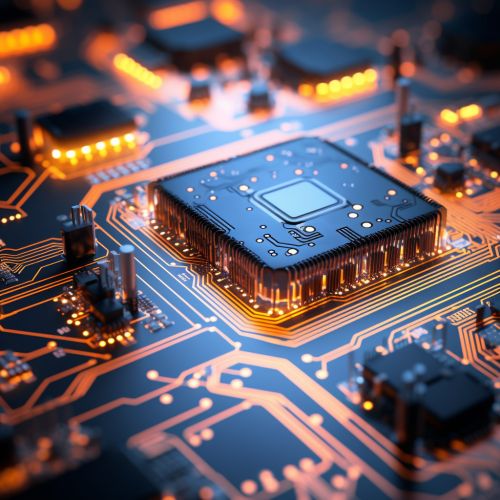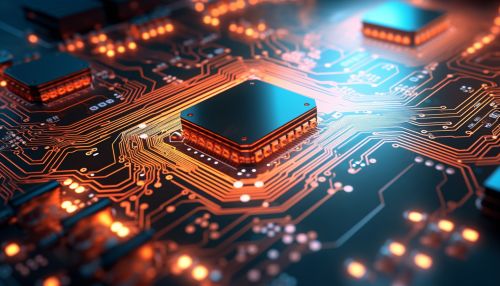Microscale Heat Transfer in Electronics
Overview
Microscale heat transfer in electronics refers to the study and application of heat transfer principles at the microscale level in electronic devices. This field is a subset of heat transfer, microscale thermophysics, and electronics, and is crucial for the design and operation of modern electronic systems.
Principles of Microscale Heat Transfer
Microscale heat transfer involves three fundamental modes: conduction, convection, and radiation. However, at the microscale, these modes behave differently than at the macroscale due to the effects of microscale phenomena such as surface roughness, thin film effects, and interfacial resistance.
Conduction
Heat conduction is the transfer of thermal energy through a solid material without any bulk motion of the material. In microscale heat transfer, conduction is influenced by the size of the device, the properties of the materials used, and the interfaces between different materials.
Convection
Heat convection involves the transfer of heat by the movement of a fluid. In microscale devices, convection can occur in the form of forced or natural convection, depending on whether the fluid motion is driven by external forces or by buoyancy forces.
Radiation
Heat radiation is the emission of electromagnetic waves, which carry energy away from the emitting body. At the microscale, radiation can be significant due to the high temperatures often encountered in electronic devices.
Microscale Heat Transfer in Electronic Devices
Microscale heat transfer plays a critical role in the operation and performance of electronic devices. As electronic devices continue to shrink in size, the importance of understanding and managing microscale heat transfer increases.
Microprocessors
In microprocessors, heat is generated due to the movement of electrons through the semiconductor material. This heat must be effectively dissipated to prevent overheating and ensure reliable operation.
LEDs
In LEDs, heat is generated due to the recombination of electrons and holes. Efficient heat dissipation is crucial to maintain the performance and longevity of the LED.
Power Electronics
In power electronics, heat is generated due to the switching of power devices. Effective thermal management is essential to prevent device failure and improve energy efficiency.
Challenges in Microscale Heat Transfer
There are several challenges associated with microscale heat transfer in electronics. These include the difficulty of accurately measuring temperature at the microscale, the complexity of modeling heat transfer processes at this scale, and the need for effective thermal management strategies.
Future Directions
The field of microscale heat transfer in electronics continues to evolve, driven by the ongoing miniaturization of electronic devices and the increasing demand for high-performance, energy-efficient systems. Future research directions include the development of novel materials with enhanced thermal properties, the design of advanced cooling systems, and the exploration of new heat transfer mechanisms at the nanoscale.


